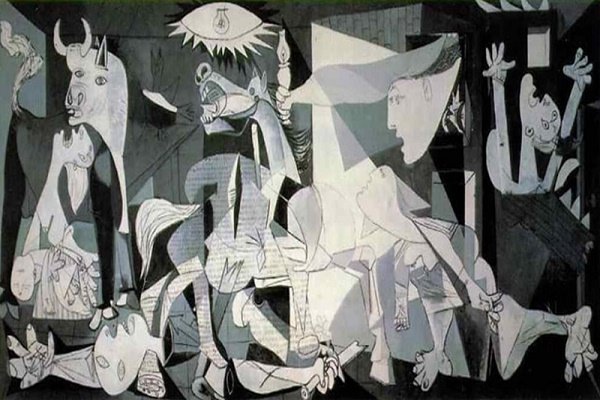Niaz Majumdar: Guernica shows the tragedies of war and the suffering it inflicts upon individuals, particularly innocent civilians. This work has gained a monumental status, becoming a perpetual reminder of the tragedies of war, an anti-war symbol, and an embodiment of peace
“It’s not a time of great happiness, it’s not a time of great joy.”
— poet Shakti Chatterjee
The whole world is beleaguered by epidemics today, and Bangladesh is no exception. We are going through a very difficult time. Every day the number of deaths is increasing alarmingly, much to our sorrow.
The deadly virus, commonly known as corona / COVID-19, has begun to reconstruct and correct the recognized behaviours of our culture in an attempt to artificially redefine the everyday rules of our social life. In fourteenth-century Europe, perhaps for the first time since the advent of the Black Death, a whole civilization is trying to understand this situation and incorporate a new rule. This time, scientific and medical experts as well as government agencies will provide the rules rather than the religious authorities.
In these difficult times, a temple/mosque/church does not define terms; rather now science is in the forefront for the salvation of man. Scientists, physicians, health workers are now working day and night to cure the people infected with this deadly virus. They are now the protectors of mankind.
Throughout the ages the human race has faced many difficult to deadly crises: wars, famines (natural and man-made), earthquakes, floods, fires, droughts, epidemics, the release of radioactive gases into the atmosphere, and so on.
For example, no artist picks up a weapon during a war, but they fight with a more penetrating tools, stimulate and give people courage behind their eyes through their creative and persuasive activities. There is a saying; “Pen is mightier than sword”.
Art and the world wars
During the World War II, the relations between art and war can be articulated around two main issues. First, art (and, more generally, culture) found itself at the center of an ideological war. Second, during World War II, many artists found themselves in the most difficult conditions (in an occupied country, in internment camps, in death camps) and their works are a testimony to a powerful “urge to create.” Such creative impulse can be interpreted as the expression of self-preservation, a survival instinct in critical times.
Throughout history, most representations of war depict military achievements and often show significant battle scenes. However, in the 19th century a “turn” in the visual representation of war became noticeable. Artists started to show the disastrous aspects of war, instead of its glorified events and protagonists. Such a perspective is best exemplified by Francisco Goya’s series, The Disasters of War (1810-1820, first published in 1863), and Otto Dix’s portfolio, Der Krieg (published in 1924). DT

